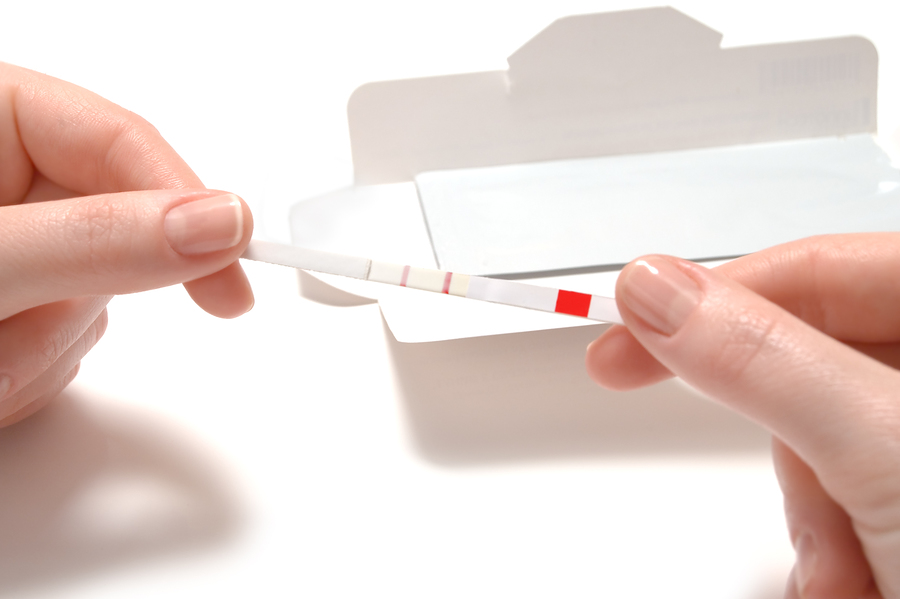If you are planning to become pregnant by sperm donation you need to learn to pinpoint your most fertile days i.e. when you are most likely to conceive. For this, you need to be able to accurately monitor your ovulation cycle.
For most women ovulation happens 10-16 days before the start of your next period. To ensure that insemination is undertaken at the correct time it is vital isuse an ovulation prediction test, to identify the correct day. We advise you to use an ovulation test from day 10 of your period (day one being the first day that you bleed when your period starts) then daily until you identity the correct day.
Take Me to:
What is Ovulation?
What does ovulation have to do with me getting pregnant?
Is there a way that I can tell when I am most fertile?
What should I know about ovulation tests?
Further Reading About Ovulation
Ovulation Test procedure
Basal Body Temperature
Luteinising Hormone (LH)
Follicle stimulating hormone (FSH)
Cervical Mucus
What is ovulation?
Ovulation is when one or more eggs are released from the woman’s ovaries. This is the most fertile time of the menstrual period. Each month up to 20 eggs can mature inside the ovaries. The ripest egg is released into the fallopian tube.
What does ovulation have to do with me getting pregnant?
A woman’s egg survives no more than 24 hours after ovulation and to become pregnant an egg and a sperm have to meet in the fallopian tube before the egg dies.
Sperm can however survive for much longer inside the vagina and will often stay around for several days waiting for the egg to be released. This means that insemination can take place several days before ovulation happens or indeed on the day of ovulation. Women have a 'fertile window' of about four days which can enable sperm to live healthily while it waits to meet a freshly ovulated egg. This fertile window does significantly reduce as a woman gets older.

Is there a way that I can tell when I am most fertile?
Ovulation usually takes place 10-16 days before the start of your next period. An average menstrual cycle of 28 days means that ovulation takes place sometime around day13-15. The length of a normal menstrual cycle, however varies between 23 days and 35 days so ovulation could occur earlier or later in your cycle.
The most accurate way to determine your most fertile time is to use an ovulation prediction test. There is also a change in cervical mucus, lower abdominal pain, increased libido and increase in pheromones duration your fertile window. In a healthy woman the cervical mucus during ovulation should be the consistency of an egg white. This mucus will help transport the swimming sperm to the awaiting egg to be fertilized.

What should I know about ovulation tests?
Ovulation tests allow you to pinpoint your ‘fertile window’ of your menstrual cycle.
From day 10 of your period the end of the ovulation test strip is dipped into the first urine of the morning. You should repeat this process each day until you achieve a positive result on your ovulation strip. Once your day of ovulation has been determined then this information will help predict the best times for inseminations to start the following month.
Ideally insemination should commence 2-3 days before ovulation is due, and then be performed on the day of ovulation (i.e. the day you get a positive result from your ovulation strip) and up to 24 hours after ovulation.
If you have a 28 day cycle i.e. day one is the first day you bleed on your period; you will ovulate on day 14. Inseminations should then take place from day 11 today 14.
Ovulation Cycle Chart
|
Usual cycle length
|
21
|
22
|
23
|
24
|
25
|
26
|
27
|
28
|
29
|
30
|
31
|
32
|
33
|
34
|
35
|
36
|
37
|
38
|
39
|
40
|
|
Days to begin testing
|
06
|
06
|
07
|
07
|
08
|
09
|
10
|
11
|
12
|
13
|
14
|
15
|
16
|
17
|
18
|
19
|
20
|
21
|
22
|
23
|
Related Articles:
Getting Pregnant
Ovulation
Home Insemination
Artificial Insemination
Natural Insemination